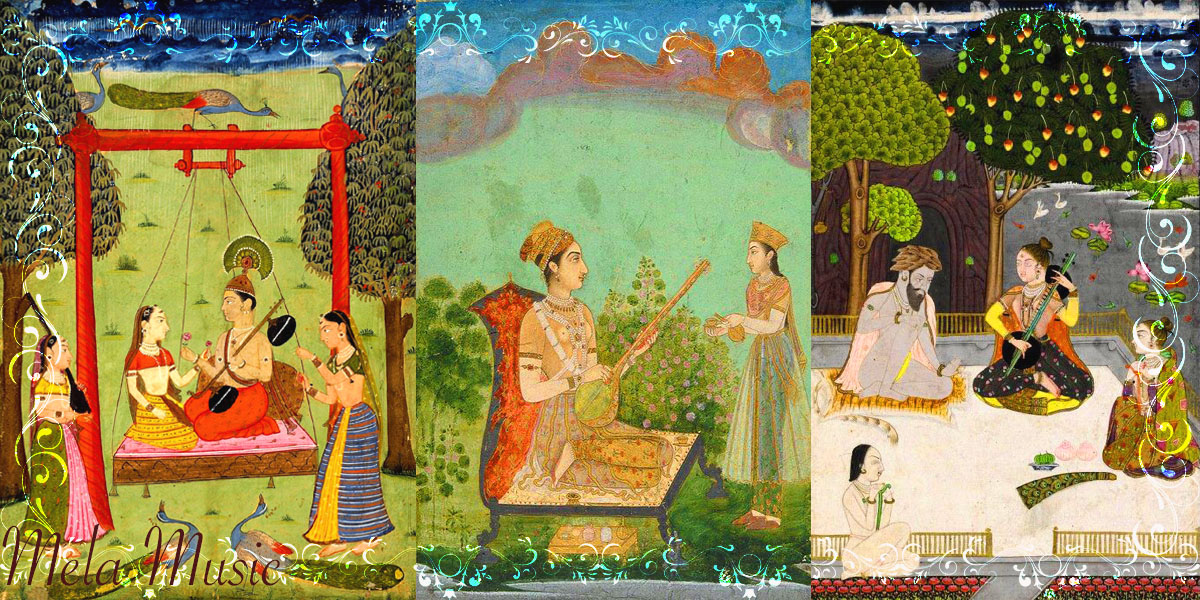
The term ‘Raga’ has an etymological root in the word ‘color’. In the context of music, a raga is a harmonious combination of swar (notes) and varna (different uses of notes). The notes of a raga are arranged in a particular fixed, ascending, descending, or oscillating pattern, which instills the composition with an emotional quality. While a raga is essentially a melodic concept, it should not be confused with a song, as a single raga can serve as the foundation for countless songs. Technically speaking, a raga is a musical entity with a specific number and sequence of notes, categorized by a particular thaat, murchhana, and ascending and descending movements, as well as their relative duration and intonation. To be considered a true raga, a composition must possess virtues such as vadi, samvadi, graha swar, nyaas swar, and varna-alamkara.
The characteristics of a raga follow:
- Many ragas come from an existing thaat, although there are many that cannot be grouped into a thaat.
- A minimum of 5 notes and a maximum of 7 notes are used to form raga. The number of notes used denotest the jaati of a raga.
- The note SA is never omitted and PA and MA are never omitted at the same time.
- Every raga will have a vadi and samvadi.
- Each raga will have an aroha and avaroha.
- Each raga has a principal mood defined.
- Each raga is associated with a time (prahar) or season.
- Shudh (natural) and vikrit (sharp and flat) notes are not used immediately next to each other. Exception: Raga Lalit, where both shudh MA and teevra MA (sharp) are used next to each other.
- According to the North Indian music system ragas are usually divided into three categories:
- Shudh RE and Shudh DHA Ragas
- Komal RE and Komal DHA Ragas
- Komal GA and Komal NI Ragas
- The position of vadi in the saptak of the raga denotes its aang, purvang or uttarang, lower tetra chords or upper tetra chords.
- The time factor of the presentation of a raga has a tendency to depend on the madhyam (MA or MA sharp) note.
- Ragas played at the time of sunrise or sunsets are called ‘Sandhiprakash Ragas’.
- Vivadi swar could be used in a raga with skill.
- Shudh Sreni Raga – This sreni (class) denotes those ragas that are pure, unmixed, prime raga classes.
- Salank Sreni Raga – This sreni (class) denotes ragas that are influenced by two ragas.
- Sankirna Sreni Raga– This sreni (class) denotes ragas that have been influenced by several ragas.
Pandit Vishnu Narayan Bhatkhande 91860 -1830) realized there were commonalities in ragas and thus interviewd countless musicians throughout India to categorize ragas and bring them together in a systematic way. He has divided ragas into three categories according to the time factor.
- Ragas for days – Diva raga
- Ragas for dawn and twilight – Usha and Sandhya raga
- Ragas for night – Ratri or Nisha raga
In a nutshell, the guiding characteristics (raga-lakshans) of a raga are:
Content provided by Sangeetpedia
